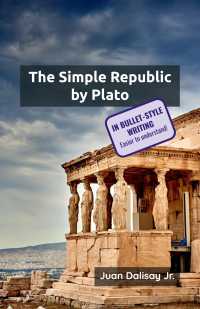The Quantum of Spacetime
January 31, 2020 4 minutes • 674 words
Table of contents
The Quantum of Space-Time or Qost is the basic unit or quantum in the spatial layer. It manifests as empty space.
In ancient natural philosophy, the aether was called the ‘air’ that filled all of Existence.
Since it is one layer above the radiant layer which facilitates sight and touch, then it is not visible nor tangible. For example, you see that there is a space between you and your desk, but you cannot see the properties of that space.
Its substance or representative perception is a black hole which we name depending on its layer.
| Layer | Substance Name | Physics Name |
|---|---|---|
| Spatial | Galactic Qost | Supermassive Black Hole |
| Radiant | Stellar Qost | Black Hole |
| Convertible | Planetary Qost | Planetary Core |
| Material | Material Qost | Center of Gravity |
In terms of the 3 influences or gunas, qosts can be classified into:
| Sublayer | Qost Type |
|---|---|
| Upper | Metaphysical qosts |
| Middle | Galaxies and Quasars |
| Lower | Stars, Planets, Moons, Material Things |
In terms of its 3 media due to the 3 influences of gunas:
| Sublayer | Medium |
|---|---|
| Upper | Metaphysical Timespace (force of timespace to split up perceptions) |
| Middle | Timespace (aging or force of time) |
| Lower | Spacetime (gravity of force of space) |
Detection and Size
The properties of qosts are detected through:
- the upper aethereal layer as the changing of ideas through time and space
- the lower layers as the reaction of light and material particles
For example, we know that there is a black hole in the center of our galaxy because of how the visible radiant stars go around it. Likewise, you see the space between you and the desk because of the existence of you and the material desk.
From these, we can plainly see that the qosts around our table is very different from those in the supermassive black hole of a galaxy.
In planets, a planetary qost is detected by the behavior of mass around it.
The qost of a heavenly body in Physics is the Schwarzschild Radius of that body. For example, a galaxy’s qost is the event horizon of its supermassive black hole.
The qost of a planet such as the Earth is the Schwarzschild Radius of the Earth which is 1 centimeter, while that of the sun is 3 kilometers.
The qost of a non-heavenly material body, such as a ballpen, rock, or empty space, is the Planck length.
Attractive and Repulsive Forces
The affinity between the gravitational signatures of qosts lead to the attractive force between them, which is called gravity by Physics.
The differences between them lead to the repulsive force which artificially leads to levitation, and naturally is called the expansion of spacetime by Physics. This is based on the Law of Conservation of Idea.
This means that gravity does not come from mass, but from the qost that is in that mass*.
*We use Newtonian mass, and not electromagnetic mass, when we say mass
The energetic qost that serves as the center of a planet, star, or galaxy rotates as a vortex. This rotation snags other lesser qosts and makes them go or away from that center. While going towards that center, it pushes matter with it. The more matter, the more the pushing force, as weight. This is what Newton saw and why he said gravity comes from matter (as mass).
Each matter-particle already has radiance and spacetime inside it. This is why massive objects create a larger vortex than a less massive one. This is what Einstein saw and why he said that gravity comes from the warping of spacetime.
A mass with an active vortex, such as a planet with a liquid core, has more gravity than a mass that has an idle vortex, such as an asteroid or a moon. A star has a much more active vortex than any planet and so its gravity is naturally so much more.
In this system, the precession of Mercury has nothing to do with the speed of light that Einstein assumed. Instead, it has all to do with the idle core of Mercury compared to the active core of the Sun.






